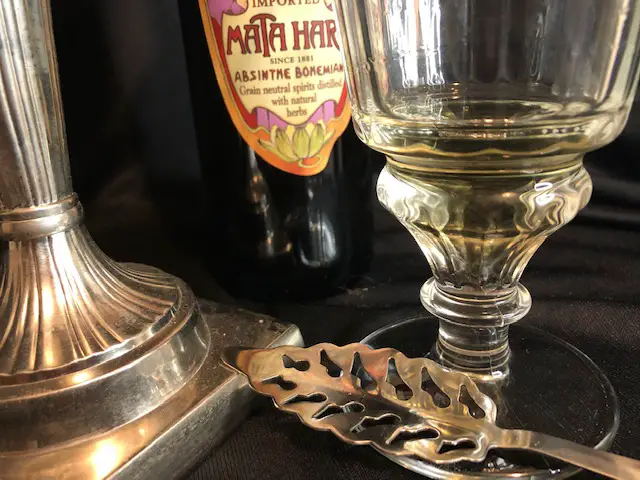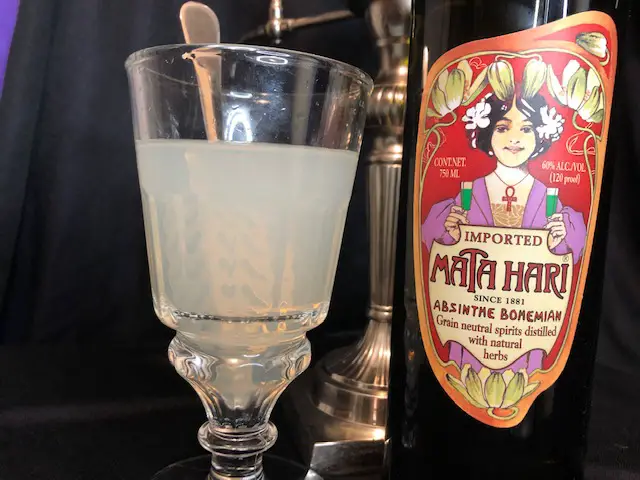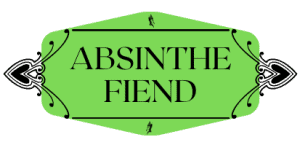Named after the famously charming Dutch dancer and spy, Mata Hari Absinthe Bohemian comes with promises of mystery and intrigue.
As you might expect from its namesake, there is a certain duality to this absinthe.
With a recipe that noticeably uses only the smallest amount of anise, Mata Hari is not concerned with fitting in among the other “regular” absinthes out there. However, it does also demand to be counted among some of the biggest names of the absinthe renaissance since the Green Fairy was made legal again.
Although, of course, it wants this on its own terms and with its own, unique Bohemian recipe.
But does it succeed?
So today we’re going to look deeper as we review the curious offering that is Mata Hari Absinthe Bohemian.
What is Mata Hari Absinthe Bohemian?
Giving credit where it is due, Mata Hari was very quickly finding a home on shelves across the US following the relegalization of absinthe.
I first tried this curious bohemian absinthe back around 2010 when it was consistently appearing alongside other “early movers” in the US absinthe market like Absente and Lucid.
But Mata Hari caught me off-guard back then just as it does to this day. Much like the curious spy that it’s named after, this absinthe is all about defying expectations.
For those who want to get into absinthe but don’t like the taste of anise, Mata Hari presents an interesting option. It’s one of the few where there is virtually no anise flavor.
What anise is present seems to only be there to create the iconic louche, but the flavor is otherwise buried amongst the other ingredients.
Mata Hari has an ABV of 60% (120 proof). It is an Austrian absinthe that is made in the Bohemian style based on a recipe that goes all the way back to 1881.
Recommended: How to Properly Prepare Absinthe (Beginner Friendly Guide)

Aroma
Spicy notes of clove and peppermint give Mata Hari an aroma that can only really be described as “Christmas.” The aroma lingers in the nose and paves the way to prominent basil, wormwood, and grassy notes with a bitter earthiness on the end.
There is a slight burn from the alcohol, so be sure to inhale gently. Otherwise, it can be overwhelming and overpower the rest of the aromas.
I was most surprised by the candy-like sweetness throughout the aroma once I began preparing this absinthe. It’s like the sweetness was waiting in ambush for water to be added.
Color & Louche
A common issue with most Bohemian absinthes on the market is the use of artificial coloring. Thankfully, Mata Hari only uses natural ingredients and achieves its color naturally.
Before preparation, the color itself is a dark, forest green. It’s a clean distillation with no particulate left in the bottle.
The louche comes on very quickly with Mata Hari Absinthe Bohemian.
It’s almost immediate which never fails to catch me by surprise. However, the louche does fade quickly and lingers as a thin and opalescent tinge in the glass.
Additionally, there isn’t a great deal of texture to the louche here. But given the reduced anise in the recipe, this isn’t terribly surprising.
It’s a decent presentation, all things considered.

Flavor & Mouthfeel
There is virtually no anise flavor to Mata Hari which might be a plus for some people, but I have a hard time getting past that.
While there are violet, peppermint, and clove/cinnamon notes in Mata Hari, it feels less “spicy” and WAY more earthy and medicinal.
I also pick up some (very) faint notes of chamomile and licorice on the back end before paving the way for a bitter wormwood finish.
There isn’t a deep complexity to Mata Hari like I generally expect from most absinthes. Of course, being named after an infamously enigmatic World War 1 spy makes the lack of complexity even more surprising.
The flavor feels very “one-note” and there isn’t much of a mouthfeel or texture to play with here. It’s very “what you see is what you get” in that way. You get all the flavors, but you’re getting them all at once.
Curiously, the back of the bottle claims that the non-dominant anise taste makes it perfect for cocktails.
This claim makes me scratch my head a bit.
I mean… The reason that classic cocktails like the Corpse Reviver No 2, Sazerac, and Death in the Afternoon call for absinthe is specifically FOR the complex anise flavor!
You can try using Mata Hari for such cocktails, but the flavor will be radically different than intended. In most cases, I can’t see it working particularly well…
Related: How To Taste Absinthe Like a Pro

Conclusion – Reviewing Mata Hari Absinthe Bohemian
Look…
I don’t pretend to not GREATLY prefer the French-Swiss style of absinthe over the Czech/Bohemian style. So, of course, individual taste counts for a lot here.
With that said, I do try to keep an open mind when it comes to absinthes that break from tradition. After all, you never know what kind of interesting flavors and experiences await you in the world of absinthe.
But personally, Mata Hari just doesn’t do it for me.
The medicinal earthiness, lack of anise, and “one-note” flavor profile just don’t fit anything that I love about the absinthe experience.
I don’t necessarily hate this absinthe, but it’s certainly not one I’ll be reaching for with any regularity. While Mata Hari may have its defenders, I’m afraid I’m not one of them.
In the days when there were fewer options in the US market, it was a unique and novel option. But these days, it’s not hard to do better.
If you’re not a fan of more traditional absinthes or want to explore absinthe but without the anise flavor, you might enjoy this.
However, if you prefer the anise-rich flavor and complexity of more classic absinthes, Mata Hari is bound to leave you disappointed and maybe just a bit heartbroken.
If you’re looking for a spicy and more budget-friendly absinthe, you might instead check out something like Mephisto Absinthe Classique, which is from the same distillery. I enjoyed that one a bit more and it still has those spicy “Christmas” notes to it, but in a way that I found more compelling.
But for a little extra than Mata Hari’s typical price tag of between $40-50, you could instead get something more complex, readily available, and enjoyable like St. George or Pernod.
